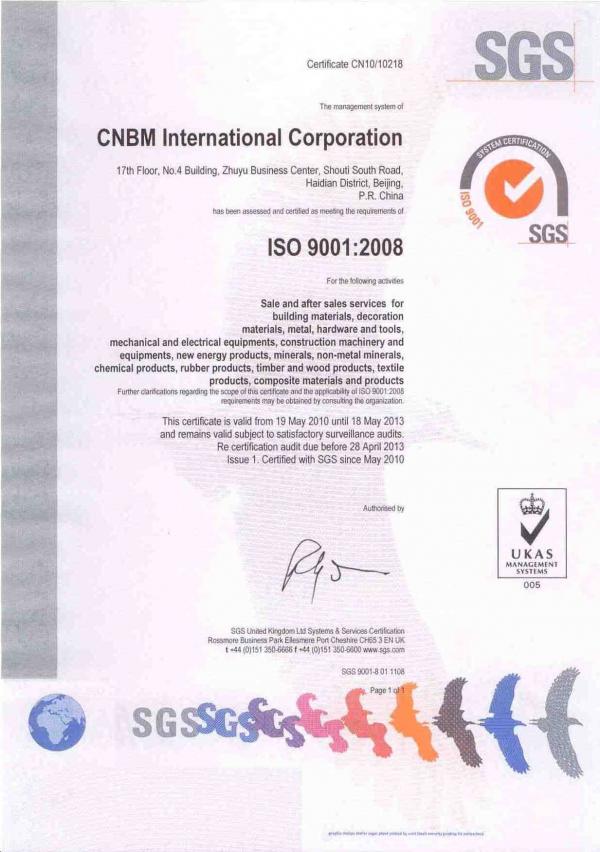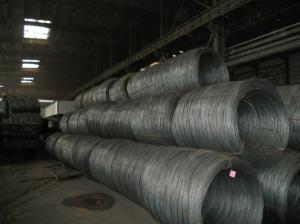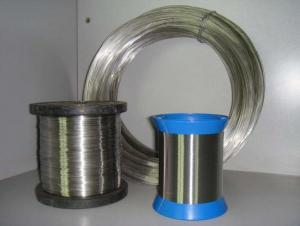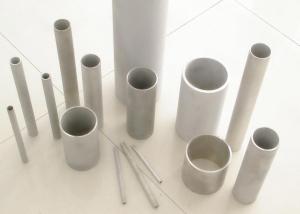304L Stainless Steel Strips
- Loading Port:
- China Main Port
- Payment Terms:
- TT or LC
- Min Order Qty:
- 1 Ton m.t.
- Supply Capability:
- 2000 Tons Per Month m.t./month
OKorder Service Pledge
OKorder Financial Service
You Might Also Like
304L Stainless Steel Strips
1. Chemical composition
|
C |
Si |
Mn |
P |
S |
Ni |
Cr |
|
Max0.03 |
Max1.00 |
Max2.00 |
Max0.045 |
Max0.03 |
9.0-13.0 |
18.0-20.0 |
2. Mechanical properties
|
Yield Strength |
Tensile |
Elongation |
Hardness (HV) |
Hardness (HRB) |
|
≥175 |
≥480 |
≥40 |
≤200 |
≤90 |
3. Standard: AISI, ASTM, GB, EN, DIN, JIS
4. Surface: 2B, NO.1, BA, NO.4, Hairline, SB, Mirror finish, Anti-skid, Cherkered etc.
5. Size: Thickness: 0.3-3mm (cold rolled), 3-40mm (hot rolled)
Width: 1000mm or 1219mm or 1240mm for cold rolled, 1500mm for hot rolled.
Length: As customers' request.
6. MOQ: 1 Ton
7. Payment terms: T/T or L/C
8. Packing: Seaworthy package with wooden or Iron pallets with the paper and the steel strip, or as customers' request.
9. Delivery time: Usually about 7 days after we confirming the order, or according to your quantity.
If you have any question or demand, pls feel free to contact me.




- Q: What are the different types of stainless steel wire connectors for plumbing?
- There exists a variety of stainless steel wire connectors for plumbing, each serving distinct purposes and fulfilling specific requirements. Below are some commonly used types: 1. Compression fittings: These connectors comprise a compression nut, ferrule, and compression ring. They establish a tight seal by compressing and connecting two pipes. 2. Push-to-connect fittings: These connectors facilitate quick and easy installation. They possess a push-fit mechanism that allows for effortless insertion and secure connection of pipes or tubing, eliminating the need for additional tools. 3. Threaded fittings: These connectors possess inner threads, enabling them to be screwed onto matching threaded pipes or fittings. When properly tightened, they ensure a secure and leak-proof connection. 4. Flared fittings: These connectors feature a flared end that is inserted into a corresponding flared fitting, creating a tight seal. They are commonly employed in high-pressure applications or situations where pipes need to be easily connected and disconnected. 5. Barb fittings: Also referred to as hose barb fittings, these connectors have a barbed end that is inserted into a hose or tubing. They are secured using a clamp or crimping tool, providing a reliable connection. 6. Quick-connect fittings: These connectors are designed for swift and effortless disconnection and reconnection. They incorporate a push-button or twist-lock mechanism, enabling convenient attachment and detachment of pipes or hoses. 7. Camlock fittings: These connectors find extensive use in industrial environments. They consist of male and female couplings with interlocking grooves, ensuring a secure connection. They are commonly employed for fluid or gas transfer. It is essential to select the appropriate stainless steel wire connector based on the specific plumbing application, considering factors such as pressure, temperature, and compatibility with the plumbing system.
- Q: How strong is stainless steel wire?
- Stainless steel wire is known for its exceptional strength and durability. It is a highly versatile material that can withstand high levels of tension and pressure without breaking or deforming. The strength of stainless steel wire can vary depending on the specific alloy used, but in general, it is considered to be one of the strongest types of wire available. This strength is due to the properties of stainless steel, such as its high tensile strength, resistance to corrosion, and ability to maintain its structural integrity even in extreme conditions. As a result, stainless steel wire is widely used in various industries, including construction, automotive, aerospace, and marine, where strength and reliability are crucial.
- Q: What are the different types of stainless steel wire coatings?
- Stainless steel wire can be enhanced in performance and durability through various coatings. Some commonly used coatings for stainless steel wire include the following: 1. PVC Coating: To provide exceptional corrosion resistance and electrical insulation, polyvinyl chloride (PVC) coating is a favored option. This coating is typically applied by immersing the wire into a heated PVC solution, allowing it to cool and harden. 2. Nylon Coating: Another popular choice for stainless steel wire is nylon coating, which offers good abrasion resistance and durability. The wire is dipped into a molten nylon solution and then cooled and solidified. 3. Polyethylene Coating: For excellent protection against corrosion and abrasion, polyethylene coating is frequently employed. It is commonly used in applications where the wire is exposed to harsh environments or chemicals. The coating is applied by either extrusion or hot-dipping the wire into a molten polyethylene solution. 4. Epoxy Coating: In applications requiring high chemical resistance, epoxy coating is a preferred option. It provides a smooth, hard, and durable finish that can withstand harsh conditions. The wire is typically dipped into an epoxy resin solution and then cured at high temperatures. 5. PTFE Coating: Known as Teflon coating, polytetrafluoroethylene (PTFE) coating offers excellent nonstick properties and resistance to chemicals and high temperatures. It is commonly used when the wire needs to slide or move freely. The coating is applied by spraying or electrostatically applying a PTFE powder onto the wire, followed by baking to form a smooth and durable finish. These examples represent just a few of the available coating options for stainless steel wire. The selection of a coating depends on specific application requirements, such as corrosion resistance, electrical insulation, or chemical resistance.
- Q: Does stainless steel wire rust?
- No, stainless steel wire does not rust.
- Q: Is stainless steel wire resistant to humidity?
- Yes, stainless steel wire is highly resistant to humidity. Due to its composition, stainless steel is corrosion-resistant, making it an excellent choice for applications in high humidity environments.
- Q: Stainless steel wire drawing faucet, OK?
- At present, the market is still copper faucet, surface plating, it is easy to shape, low processing costs, but lead is not environmentally friendly, harmful to human health. Stainless steel faucet is an emerging industry, not leaded, and the surface is mostly wire drawing treatment, not rust, and for a long time, only with scouring cloth scouring, and then change a new. And the copper bibcock is damaged because of the coating. Unsightly and harmful. As far as health is concerned, stainless steel taps are suitable for kitchen use.
- Q: Can stainless steel wire be used for wire rope cranes?
- Yes, stainless steel wire can be used for wire rope cranes. Stainless steel wire offers several advantages for this application. Firstly, stainless steel is highly resistant to corrosion, which is particularly important for cranes that are exposed to outdoor or harsh environments. This corrosion resistance ensures the longevity and durability of the wire rope, reducing the need for frequent maintenance and replacements. Additionally, stainless steel wire has a high tensile strength, allowing it to withstand heavy loads and provide reliable lifting capabilities. It also has excellent resistance to fatigue, which is crucial for wire ropes that are subjected to repeated bending and flexing during crane operations. Furthermore, stainless steel wire has low electrical conductivity, minimizing the risk of electrical hazards or interference when operating cranes near power lines or electrical equipment. Overall, stainless steel wire is a suitable choice for wire rope cranes due to its corrosion resistance, high tensile strength, fatigue resistance, and low electrical conductivity.
- Q: What is stainless steel edge silk?
- The above mentioned standard, I dare not deny, but I don't know what you said stainless steel side silk, is not refers to stainless steel coil, in the processing, the remaining side silk material.
- Q: Can stainless steel wire be used for wire binding?
- Yes, stainless steel wire can be used for wire binding. Stainless steel wire is known for its strength, durability, and resistance to corrosion, making it an excellent choice for wire binding applications. It is commonly used in industries such as bookbinding, packaging, and construction, where a secure and long-lasting binding solution is required. Stainless steel wire is available in various thicknesses and can be easily formed into loops or spirals to create a professional and neat binding finish. Additionally, stainless steel wire is compatible with most wire binding machines, making it a versatile option for binding documents, reports, presentations, and other materials.
- Q: How is stainless steel wire different from carbon steel wire?
- Stainless steel wire is different from carbon steel wire primarily due to its composition and properties. Unlike carbon steel wire, stainless steel wire contains a higher content of chromium, which provides excellent resistance to corrosion and oxidation. This makes stainless steel wire more suitable for applications in harsh environments or where exposure to moisture is a concern. Additionally, stainless steel wire offers superior strength, durability, and temperature resistance compared to carbon steel wire, making it ideal for applications requiring high tensile strength or elevated temperatures.
1. Manufacturer Overview
| Location | Zhejiang, China |
| Year Established | 2005 |
| Annual Output Value | Above US$1.6 million |
| Main Markets | Europe, North America. |
| Company Certifications |
2. Manufacturer Certificates
| a) Certification Name | |
| Range | |
| Reference | |
| Validity Period |
3. Manufacturer Capability
| a) Trade Capacity | |
| Nearest Port | Shanghai |
| Export Percentage | 40% |
| No.of Employees in Trade Department | Above 30 people |
| Language Spoken: | English, Chinese |
| b) Factory Information | |
| Factory Size: | Above 5000 square meter |
| No. of Production Lines | Above 6 |
| Contract Manufacturing | OEM Service Offered |
| Product Price Range | Average |
Send your message to us
304L Stainless Steel Strips
- Loading Port:
- China Main Port
- Payment Terms:
- TT or LC
- Min Order Qty:
- 1 Ton m.t.
- Supply Capability:
- 2000 Tons Per Month m.t./month
OKorder Service Pledge
OKorder Financial Service
Similar products
Hot products
Hot Searches
Related keywords




























